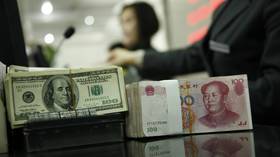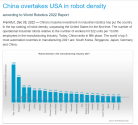Chinese institutions
CITIC Securities: It is expected that the Chinese economy will achieve a growth rate of more than 5% in 2023 with the support of consumption and infrastructure
Will the Chinese economy achieve a growth rate of more than 5% in 2023? China's GDP growth rate in 2022 is expected to be slightly higher than that in 2020, but the base will remain low. Therefore, it is not difficult to achieve an economic growth rate of more than 5% this year from a low base in 2022. Excluding the impact of unexpected events, while considering the economic stimulus in 2023 and the optimisation of pandemic prevention and control measures, China’s economic activities will gradually return. The consumption and infrastructure sectors will provide strong support for economic recovery.
Dongfang Jincheng: The year-on-year growth rate of China’s GDP in 2023 is expected to reach around 5.0%-6.0%
In 2023, the impact of the three-year pandemic will subside in an all-round way, which will drive domestic GDP growth to rebound against the background of the global economic slowdown.
The GDP growth target for 2023 is set at "around 5.0%", which is higher than the actual growth rate of about 3.0% in 2022.
In 2023, the year-on-year growth rate of GDP is expected to reach around 5.0%-6.0%. The actual growth momentum will be "weak at the beginning of the year and strong at the end". The biggest uncertainty facing the macro economy in 2023 is when the real estate industry will pick up and the recovery pace. In the context of the global economic slowdown, the growth of Chinese exports will drop significantly in 2023, which could become a bearish factor for Chinese economic growth.
CDB Securities: It is expected that China’s GDP will increase by 5% year-on-year in 2023 in neutral scenario
In 2022, the Chinese economy is still in the process of recovery, but it will be generally less impacted by the pandemic. Among them, the infrastructure investment plays the role of pillar sector, while the investment in high-tech manufacturing and technological transformation will lead the manufacturing investment, and the export market will remain relatively resilient. But at the same time, the recovery of consumption is slow, the drag on real estate investment is increasing, and the supply side is constrained by the demand side that has not seen a significant improvement for a long time, and its role in supporting the economy has weakened. China’s GDP is expected to grow by 2.8% year-on-year in 2022.
For the Chinese economy in 2023, the recovery of domestic demand under the influence of the pandemic is still uncertain. At the same time, the decline in export growth rate caused by the recession in overseas demand may be inevitable, and it is pressing to boost domestic demand. In view of the current situation of weak domestic demand, it is necessary to optimise the prevention and control of the pandemic to the greatest extent, improve the efficiency of infrastructure projects, accelerate the transformation and upgrading of the manufacturing industry, and stabilise the development of the real estate market. It is estimated that in the neutral scenario (the impact of the pandemic is subsiding, consumption is gradually recovering and policies remain stable and positive, etc.), China’s GDP will be 5% year-on-year in 2023.
Guotai Junan: China's economic growth rate is predicted to be 4.8% in 2023
In 2023, China's macro economy will meet key challenges in many fields. There are three trends in the macro environment: mometary tightening, China's "quasi-MMT", and industrial policy and institutional reforms.
We predict that China's economic growth rate will be 4.8% in 2023, and economic recovery will start in the second quarter, and the economy will be more optimistic in the second half of the year. There is no worry about inflation throughout the year, and the economic recovery will accelerate since the third quarter of 2023. The economic policy environment will favour equity assets, the fiscal and monetary policy is relatively easy, and the credit will bottom in the first half of the year. The important change lies in the significant increase in the influence of industrial policies.
Yide Futures: Restoration is more self-generated and long-term oriented
Yide Futures predicts that China’s GDP will grow by 5.8% year-on-year in 2023, and the growth rate in the four quarters will be 4.6%, 8.0%, 5.2% and 5.4% respectively. If the wait-and-see period after the pandemic prevention and control measures are lifted and the recovery of the consumption is slow, the GDP forecast will be lowered to 5.3% for the whole year, and 4.3%, 7.4%, 4.7% and 4.9% for the four quarters respectively.
In 2023, under the background of the expected stabilisation of the economic cycle, the policy environment will continue to improve. But the growth will be weighed on by the constraints of the international environment and the risk of rebounding domestic inflation, and structural policy tools will be the main key.
The
Kaiyuan Securities believes that short-term post-pandemic recovery can be expected and the long-term growth is under pressure. It is estimated that the GDP growth rate in 2023 will be 5.1%. (1) The history of global efficiency and Chinese-style modernisation: The disappearance of the demographic dividend has weighed on the development potential. It is estimated that China's economic growth in the next five years may fall to 5.2%-5.4%, and the pandemic may have an additional downward impact of 1.3 percentage points. Therefore, "Chinese-style modernisation requires the realisation of high-quality development" and requires momentum from technological progress and structural upgrading.
According
to Wanhe Securities, the economic growth rate in 2023 is expected to be around 5.5%. Since the outbreak of the pandemic three years ago, China's average annual economic growth rate has remained low. Promoting economic growth back to a reasonable range is the focus of economic work this year. The momentum of economic growth in 2023 is still weak.
International institutions
Goldman Sachs: China's economic growth forecast raised to 5.2% from 4.5% in 2023
China's pandemic prevention and control measures continue to be optimised, and the reopening is earlier than generally expected. As is mentioned in the
Goldman Sachs Outlook - 2023 China Macroeconomic and Stock Market Strategy released earlier, reopening means that China may usher in a strong consumption rebound in 2023, a stronger core inflation rate and a gradual return to normal cyclical policies, Goldman Sachs’s macroeconomic research team also
raised China's economic growth forecast for 2023 to 5.2% after the government announced the optimisation of pandemic prevention and control measures in addition to the reference to China's economic data for November released in mid-December. Previously Goldman Sachs expects China's GDP growth rate to accelerate from 3.0% this year to 4.5% in 2023.
Judging from the driving forces for the economic recovery, China's exports are bound to slow down due to weakening international demand, while major boost will shift from investment to consumption driven by the reopening of the economy. Among the consumer categories, the areas most affected by the pandemic, such as travel and entertainment, have the greatest room for recovery. With regard the investment category, Goldman Sachs expects infrastructure investment to decelerate significantly in 2023, followed by manufacturing investment to a lesser extent.
UBS also raised its forecast for China's economic growth in 2023 from 4.5% previously to 4.9%. UBS chief China economist Wang Tao believes that China's economic activities will gradually recover starting from early 2023.
JPMorgan Chase: China's GDP growth rate is expected to reach 5.3% in an optimistic scenario
JPMorgan raised its baseline forecast for China's economic growth in 2023 to 4.3% from 4.0% due to the earlier-than-expected lift of pandemic control measures. JPMorgan Chase previously predicted that China's economic growth in 2023 will be 4%. If an "orderly, well-prepared, and clear-cut reopening" is achieved, the growth rate is expected to reach 5.3% under optimistic scenarios, but the key lies in the transition period after the pandemic control policies are lifted. As the drag from the pandemic outbreak fades by the middle of 2023, economic growth may receive greater attention.
After lifting pandemic control policies, the infection curve will suddenly steepen, which may lead to a short-term slowdown in consumption and service spending, and may interrupt production and supply chain activities. It is predicted that the economic growth rate in the second and third quarters of 2023 will be lower than the trend growth rate, and the GDP growth rate will return to the trend level in the fourth quarter and exceed the trend level in the first quarter of 2024. It is predicted that the economic growth rate in 2023 and 2024 will be 4% and 6% respectively.


